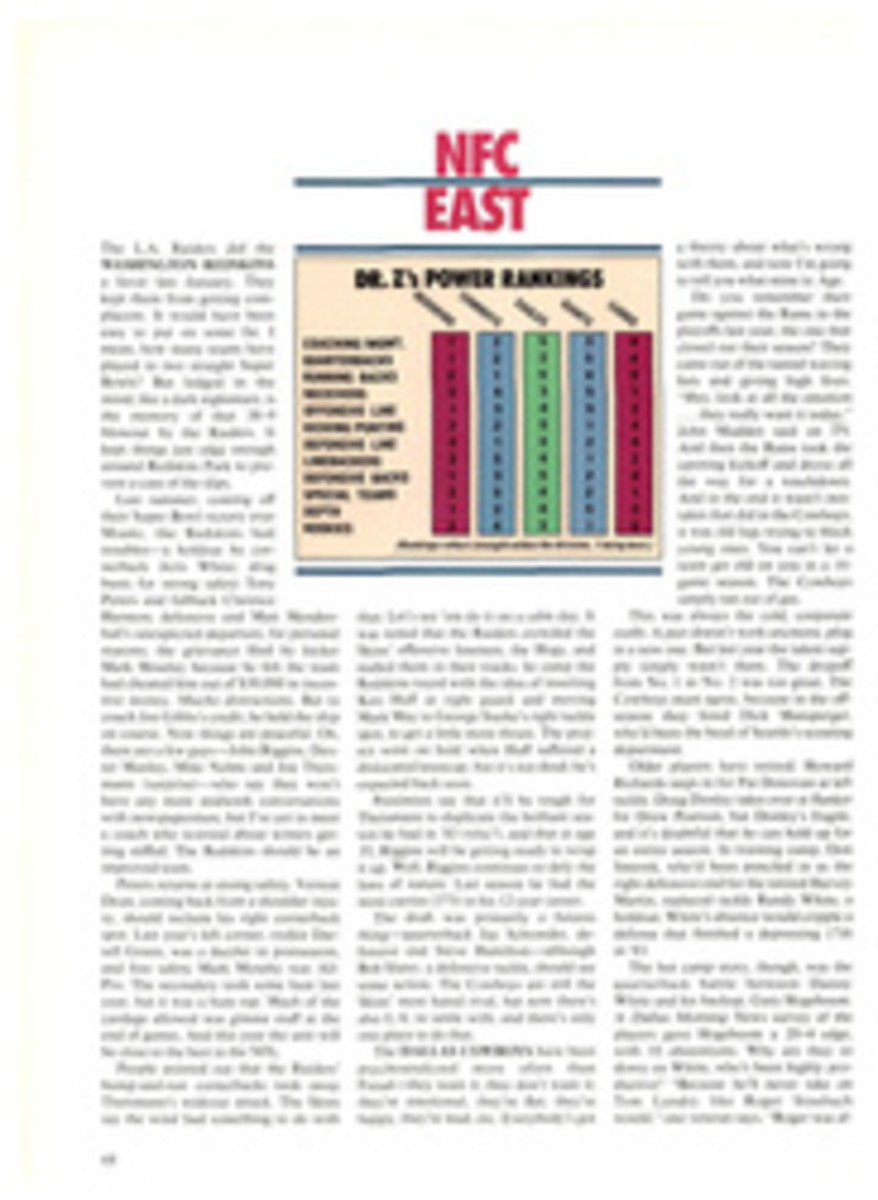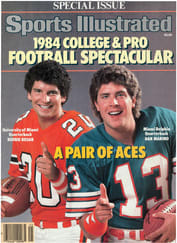
HIGH SCHOOL FOOTBALL'S BEST TEAM MAY HAVE BEEN EVERETT, MASS., 1914
Everyone has nominations for the greatest high school football teams ever. Ohioans might give the nod to the Massillon dynasty of the 1950s. Or to Gerry Faust's Moeller High team of 1976, which, en route to an undefeated season, outscored its opponents 488-40 and demolished Gahanna Lincoln 43-5 for the state championship. Texas, too, has had some fine teams, like Big Sandy (1975) and Waco (1927), currently first and second, respectively, on the alltime single-season scoring list.
On the other hand, given the staggering number of dominant teams, some may be tempted to concede that the search for the "greatest" is a waste of time and energy, much like other celebrated quests for elusive absolutes—true love, impartial justice. But there's a rebuttal to such a conclusion and it comes from a surprising source: New England, a region no longer known for outstanding football at any level. In 1914, while Woodrow Wilson was promising to protect the nation from the perils of a world war, a remarkable team from Everett, Mass., an industrial suburb of Boston, was achieving an astounding record, going undefeated through a 13-game schedule, shutting out all its opponents and outscoring them by the almost unbelievable margin of 600-0.
Well, was Everett's record achieved against a group of inferior local teams? No. In fact, in its final game of the season, on Nov. 29, Everett played a team from Oak Park, Ill. for the national championship. More than 6,000 fans attended the game in Oak Park, and back in Everett a crowd estimated at 2,000 gathered at the firehouse to receive progress reports by telegraph. After the first quarter, the score stood Everett 32, Oak Park 0. When the game ended, Everett, the beast from the East, had beaten Oak Park, the best of the Midwest, by the stunning score of 80-0.
Everett was an extremely small team by modern standards—its line averaged a mere 151 pounds, and the biggest player in the backfield, bruising fullback Rufus Bond, weighed only 158. But Everett was fast, especially its star halfback, Jack Cannell, who scored 38 touchdowns that season and, even more surprising, threw for 16 more, using a heretical weapon, the forward pass, then quaintly referred to as the "basketball toss." Bond, too, was a major part of the Everett offense, scoring 22 touchdowns. The backfield mates of Bond and Cannell were Ty Green, a halfback who regularly threw TD-producing blocks, and quarterback Joe (Fitter) Fitzgerald, whose advanced ball-handling prowess befuddled opposing defenses.
Easy to spot on the sidelines in one of his stylish suits, coach Cleo O'Donnell was a demanding perfectionist. During his tenure at Everett, from 1901 to 1915, his record was 68-8-6, and through one stretch between 1913 and 1915 Everett shut out its opponents in 27 consecutive games. O'Donnell later left Everett to coach at Purdue, Holy Cross and St. Anselm's College in New Hampshire. But he took from Everett a foundation of successful football. So did many others, from Charley Brickley, who drop-kicked four of five field goals in Harvard's 15-5 victory over Yale in 1913, to Dan Ross, whose 11 receptions for the Cincinnati Bengals established a record in Super Bowl XVI.
And what about the Everett stars of 1914? Did they go on to further athletic glory? Everett's best player, Cannell, certainly did, continuing his winning ways at Dartmouth as a player (he was quarterback and captain of the 6-1-1 1919 team) and later as a coach. In fact, he holds a revered niche in Dartmouth's football lore as the coach who broke the "Yale Bowl jinx," Dartmouth's term for Yale's unbeaten streak against the Big Green, which began with the teams' first game in 1884 and remained unbroken until a Dartmouth victory in 1935. In 1931 coach Cannell was determined to bring the frustration to an end, and though his squad only tied Yale, its stirring comeback from a 33-10 deficit was widely viewed on campus as clear-cut proof that the Elis could be beaten.
Cannell's teammates are more difficult to trace. Perhaps none of them competed successfully beyond high school. But for all the members of that team, the memories must have lingered long; memories of that magic year when the good guys always won and nothing seemed impossible—when they were truly the greatest high school team in America.

